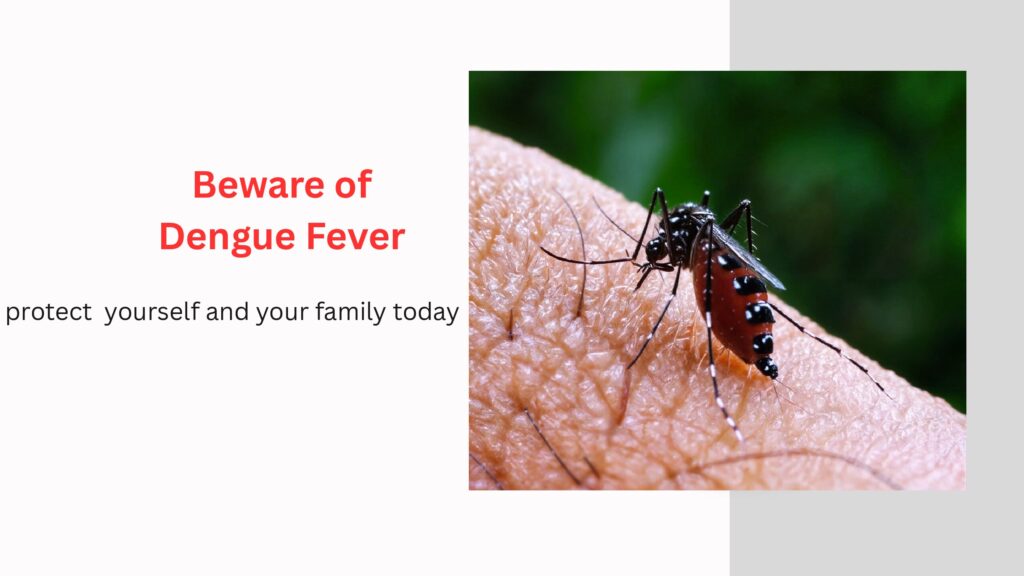What is Dengue Fever?
Dengue Fever is a dangerous mosquito-borne disease caused by the bite of an infected female Aedes mosquito. This viral infection can range from mild flu-like symptoms to severe, life-threatening conditions. Due to intense joint and muscle pain, Dengue is also called Breakbone Fever.
The Aedes Mosquito – Deadly Carrier of Dengue:
The Aedes mosquito, identifiable by its white and black stripes, is the main carrier of Dengue Fever. These mosquitoes are most active during the day—especially in the morning and late afternoon—but recent studies show they can also bite at night in well-lit areas.
Aside from Dengu
Fever, the Aedes mosquito can spread other mosquito-borne diseases such as Chikungunya and Zika virus. Between May and mid-August, their breeding increases significantly, leading to frequent Dengue outbreaks.
Common Dengue Symptoms:
Recognizing Dengue symptoms early is crucial for proper treatment.
Mild to Moderate Symptoms:
Severe headache (especially behind the eyes)
Intense muscle and joint pain
Nausea or vomiting
Skin rash
Severe Symptoms:
Heavy bleeding
Plasma leakage in blood
Organ failure or paralysis
If any of these occur, seek Dengue treatment immediately.
What to Do If You Suspect Dengue Fever:
- If you notice early Dengue symptoms, follow these steps:
- Visit a doctor immediately—avoid self-medication.
- Do not take painkillers without medical advice.
- Get a blood test done right away.
- Drink plenty of fluids and take complete rest.
- Eat vitamin C-rich fruits; avoid oily, spicy, and processed foods.
- Sleep under a mosquito net to prevent further bites.
A Brief History of Dengue Fever
The first recorded case of Dengue Fever dates back to 992 AD in Chinese medical records. The term was first used in 1779, and within a year, outbreaks spread across Asia, Africa, and North America. During World War II, Dengue outbreaks became widespread.
Dengue Prevention Tips
Effective Dengue prevention requires community awareness and cleanliness:
- Eliminate stagnant water from pots, drains, and rooftops.
- Keep surroundings clean to prevent Aedes mosquito breeding.
- Use mosquito repellents and nets during the day and night.
- Support government spraying programs in both rural and urban areas.
- Raise Dengue awareness in your community through campaigns.
Final Word
When it comes to Dengue Fever, prevention is better than cure. Keep your surroundings clean, remove stagnant water, and spread Dengue awareness. Your effort today could save someone’s life tomorrow.

